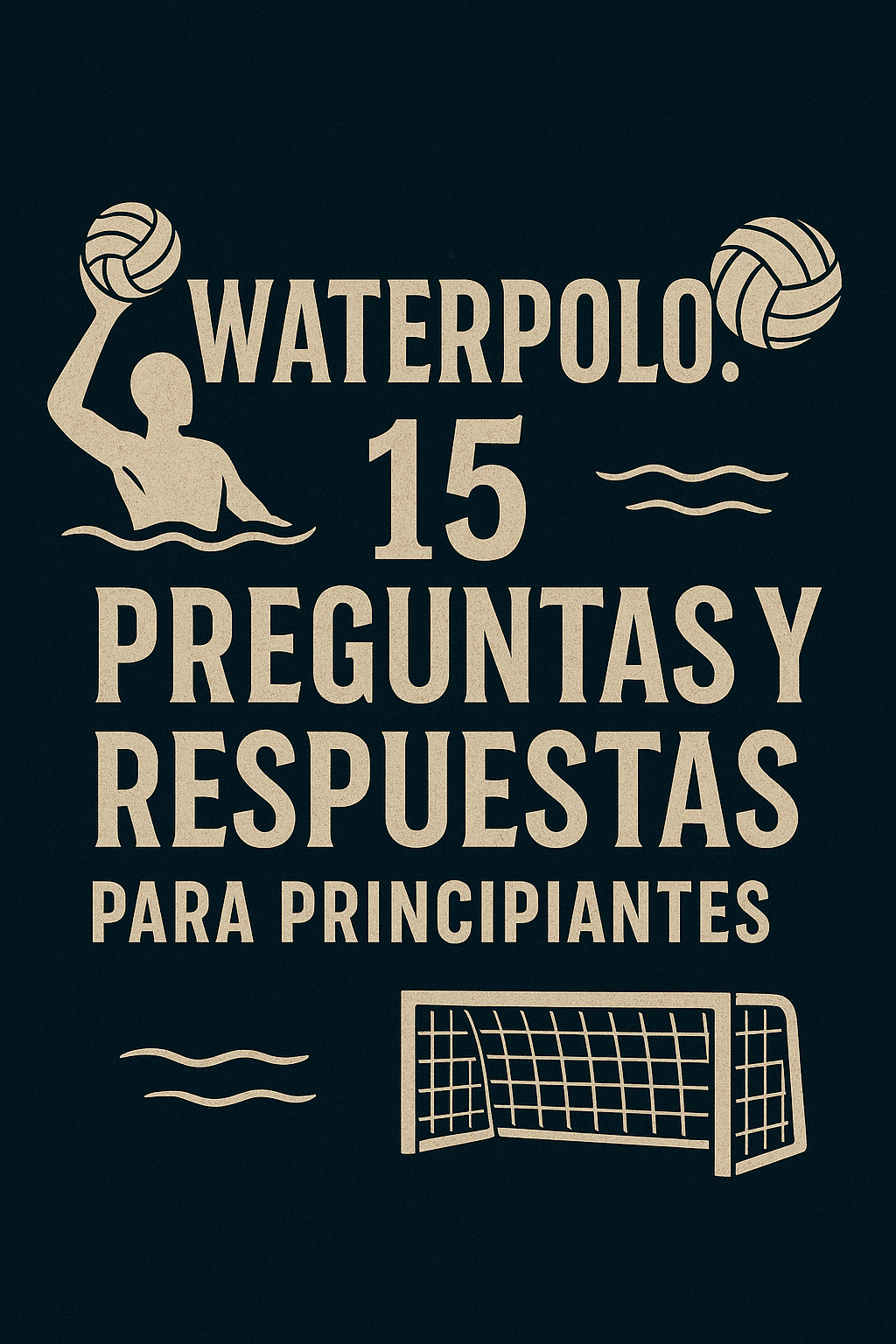
Water Polo: 15 Questions and Answers for Beginners | WEARPOLO
Share
Water Polo: 15 Questions and Answers for Beginners | WEARPOLO
1) What is water polo in two sentences?
Water polo is a team sport played in a pool: two teams try to score the most goals by throwing a ball with their hands. It's played without using footwork, so the floating and movement technique (the famous "beater" or bicycle kick) is key.
2) How many players are there and what positions exist?
Seven players per team compete in the water: the goalkeeper and six outfield players. A total of 13 players are represented. These include the pivot (center, near the opponent's goal) and the wingers (full-backs and center-backs) in positions 1 through 5, who move the ball, create space, and finish. There are substitutes on the bench and frequent substitutions are made.

3) How do you win a match?
As in soccer, the team with the most goals at the end of regulation time wins. If the tournament requires a winner (playoffs), the match can be decided by penalties. The match is divided into four periods with short breaks between them.

4) Can you touch the bottom or hold on to the wall?
No. You're always treading water. You can swim with any stroke, but the most efficient way is to combine the kick paddle or bicycle stroke (to stay high) with short strokes and quick changes of direction.
5) How is it scored and where can it be thrown from?
Each goal is worth 1 point. Shots can be taken from virtually any offensive zone with the ball in play; there are reference lines (for example, the 2 m mark for offensive offside and another line further out for certain actions) that determine where you stand and how you execute fouls and shots.

6) What makes the goalkeeper special?
The goalkeeper can handle the ball with both hands inside his penalty area, wears a different-colored cap (usually red), and his job is to read angles and anticipate. He usually "goes out" to the 1-2 meters or more gap to close spaces and organize the defense.

7) What is the “buoy” and why is it so important?
The pivot fights for position near the opponent's goal to receive and turn or draw fouls. If the team manages to "get" the ball to the pivot, it forces the defense to drop and opens up clearer outside shots for their teammates.

8) What equipment is used?
A cap with ear flaps (protection and identification), club-level technical swimwear, and flip-flops/towel. The ball is specific (high grip) and the size depends on the category, from 3 to 5. The cap ties under the chin and has a clearly visible number.
9) Is there contact? Is it a rough sport?
Yes, there is controlled contact: pushing, blocking, and jousting for position are part of the game. Fouls prevent grappling, sinking opponents, or preventing clear shots. They are penalized with a simple foul, temporary suspension, or penalty depending on the severity (exact times may vary by competition).
10) What size is the pool and how deep is it?
It is played in deep pools to avoid standing. The dimensions depend on the level and venue; in modern competitions, the range is approximately 25 m long by 20 m wide (this can vary). The floating goals are centered at each end.

11) What basic skills do I need to get started?
Float high with a mixer or bicycle feet without getting tired.
Orient yourself (receive, look, pass and shoot in balance).
Swim short and change pace (defense-attack).
With that, in just a few weeks you'll be able to play your first games.
12) What is a typical offensive play like?
Quick ball circulation, the team looking for an advantage: passing to the ball carrier if they gain space or shooting from outside when the defense loses ground. Off-ball movements (screens, crosses) open up passing and shooting lanes.
13) What happens when there is an exclusion?
A player who commits a serious foul is temporarily removed from the water, and his team is down 6 against 5. The opponent organizes a superiority to move quickly and shoot with more space. The exact length of this exclusion may vary depending on the tournament.
14) Is it mixed? Are there age categories?
There are male and female categories, from junior to senior, and also age groups (under 10, under 12, under 14, under 18, under 20, under 21, under 22, under 23, under 24, under 25, under 26, under 27, under 28, under 29, under 30, under 31, under 32, under 33, under 34, under 35, under 36, under 37, under 38, under 39, under 40, under 41, under 42, under 43, under 44, under 45, under 46, under 47, under 48, under 49, under 50, under 51, under 52, under 53, under 54, under 55, under 56, under 57, under 58, under 59, under 60, under 61, under 62, under 6
15) How do I start if I've never played?
Visit a club or school in your city, ask about the beginner's group, and try 2–3 sessions. Bring comfortable swimwear, a swimming cap, and lots of enthusiasm; you'll learn basic floating, passing, and shooting techniques.




